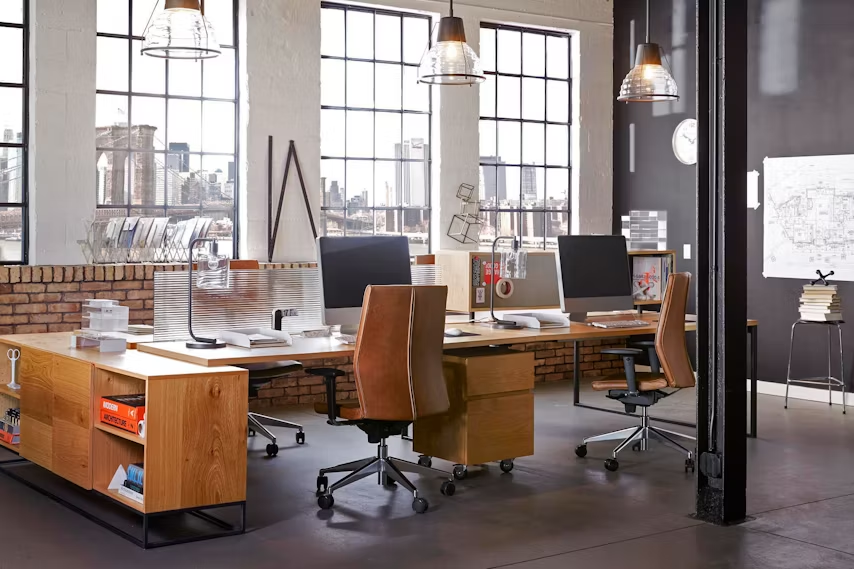The collaborative report Building Tomorrow: Trends Driving the Future of Design is your guide to what’s shaping the best buildings in the world today. In the spirit of knowledge-sharing, creative analysts PSFK has made it completely free to download: click here to grab it now.
In the meantime, here is a rundown of the nine global trends identified by researchers. What is making architects tick now, and what lies ahead for the built environment? The following trends and their accompanying articles give a glimpse of the future of architecture …

Women’s Opportunity Center by Sharon Davis Design, Kayonza, Rwanda
1. Communal Spirit
“Congregating and connecting with other people has always been an important function of architecture, but today’s public and private spaces are changing to reflect a greater desire for shared experiences and environments. Analysis of thousands of contemporary architectural projects has revealed that architects and their clients are increasingly prioritizing buildings that encourage stronger social cohesion, both at home and in the workplace.”
As featured in “People Power: The Rise of Communal Spirit in Architecture”

Shipyard Cranes Lighting Giants by Dean Skira, Pula, Croatia
2. Intentional Play
“While cities and their citizens are dynamic and ever changing, architecture is often viewed as static and sedate. However, architects are starting to see things differently: in an effort to breathe more life into the built-environment, designers are experimenting with bright colors, interactive elements, and the whimsical use of texture, light, and geometry to actively engage visitors and residents alike.”
As featured in “Kingdoms of Fun: A New Era of Play in Architecture”

© Mikkel Frost
The Children’s Home of the Future by CEBRA, Kerteminde, Denmark
3. Fluid States
“In the internet age, the way we live, work, and play is changing almost beyond recognition. As the lines between office, home, and leisure activities blur, both private and public spaces must now fulfill multiple purposes in a defined amount of space. Clients are now seeking more fluid forms of architecture, incorporating adaptable or mixed-use spaces that reflect the increasingly dynamic needs of inhabitants.”
As featured in “Liquid Architecture: The Dynamic, Adaptable Spaces Emerging From the Fluid State of Design”

© Kyungsub Shin
Knot House by Atelier Chang, Geoje-si, South Korea
4. Hidden States
“As more and more of us populate dense urban areas, the desire for places where one can find seclusion is increasing. Architects are responding to this need in innovative new ways, carefully designing spaces to help individuals find moments of solitude and quiet to connect with their thoughts, individuals, or their surroundings. These intimate retreats allow people to filter out the distractions and pressures of modern life and reconnect with the things that are most important to them.”
As featured in “How to Disappear Completely: Our Growing Need to Create Hidden Escapes”

House in the Mountains by GLUCK+, Colorado Rocky Mountains, Colo., United States
5. Blended Landscapes
“In a cacophonous world where everything from advertising to architecture is competing for attention, many designers are now pushing back with understated getaways and buildings that gain their power by achieving harmony with their surroundings. Clients are increasingly looking for buildings that minimize visual impact, and architects are responding with projects that cleverly integrate their structures with the natural context.”
As featured in “Blended Landscapes: A New Union Between Architecture and the Earth”

Marlboro Music: Five Cottages by HGA Architects and Engineers, Marlboro, Vt.
6. Exercised Restraint
“Is the era of instant icons and flamboyant “Starchitect” projects almost at an end? New research conducted by PSFK and Architizer suggests it could be. Analysis of hundreds of the best contemporary projects shows that many firms are moving away from architectural extravagance and scale in their efforts to make a powerful statement.”
As featured in “Less Is More: The New Wave of Young Architecture Firms Exercising Radical Restraint”

© Iwan Baan
Bombay Sapphire Distillery by Heatherwick Studio, London, United Kingdom
7. Second Life
“After years in the (re)making, it appears that the age of architectural upcycling is upon us. An increasing number of firms are reacting against the throwaway culture proliferating in modern cities throughout the developed world, finding increasingly radical ways to reuse existing infrastructure, aging industrial buildings, and redundant materials.”
As featured in “Second Life: The Quiet Revolution in Renovations and Adaptive Reuse”

Josey Pavilion by Lake|Flato Architects, Decatur, Texas
8. Passively Powered
“Exceptional efficiency is the new normal: Many architects are taking the next step in sustainable solutions by creating spaces with less embodied energy and increasingly low-impact mechanical and electrical systems. The adoption of new materials — in combination with thoughtful design and construction techniques — is reducing the amount of resources needed to maintain a building in a wide variety of environments.”
As featured in “Passive Power: The Architecture Firms Taking Energy Efficiency to the Next Level”

Shenzhen Bao’an International Airport by Studio Fuksas, Shenzhen, China
9. Breakthrough Builds
“Emerging technologies are finally at the scale and sophistication to radically transform architectural forms and construction techniques. New research into global architectural trends has revealed that a number of young technologies are now entering the professional practice mainstream. From drone assembly to the proliferation of 3D printing formats, these once experimental tools are pushing the possibilities of what future building designs and cityscapes will come to resemble.”
As featured in “Breakthrough Builds: The Technology Trends Revolutionizing Architecture”
Which trends do you see shaping architecture in 2016 and beyond? Let us know in the comments section below and be a part of this industry-wide research by entering your best projects in the A+Awards, today.




